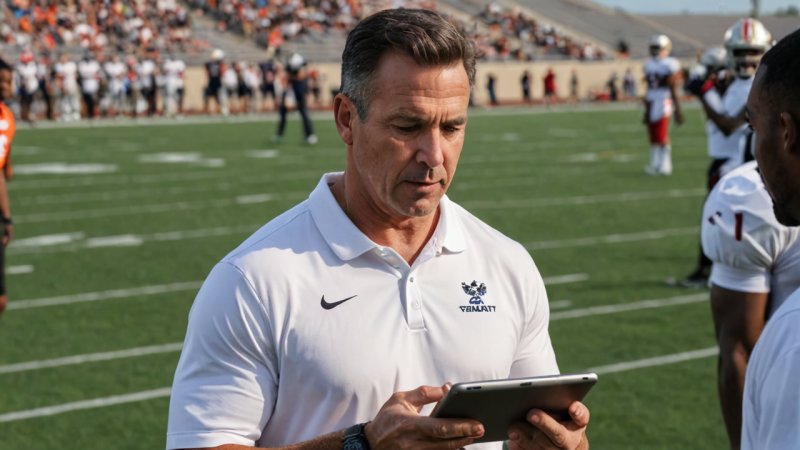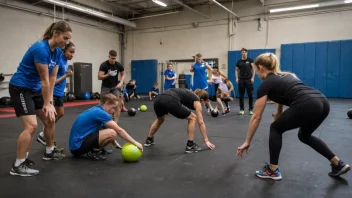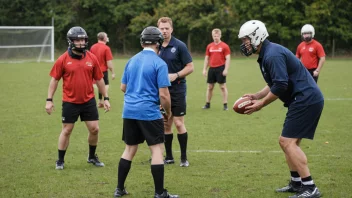Football is a fast-paced and physically demanding sport, where player safety is paramount. With the increasing awareness of concussions, injuries, and long-term health consequences, implementing effective safety measures is critical for all levels of play. One innovative approach that can significantly enhance player safety is the use of feedback loops. This article explores how these loops can be utilized to continuously improve safety protocols, training methods, and overall player well-being.
Understanding Feedback Loops
A feedback loop is a system where the output or result of a process feeds back into the system as input, allowing for ongoing evaluation and improvement. In the context of football, feedback loops can be applied in various ways, including performance analysis, injury prevention strategies, and player education. By effectively gathering, analyzing, and utilizing feedback, coaches, trainers, and players can create a safer playing environment.
The Importance of Data Collection
The first step in establishing a feedback loop is the collection of relevant data. This can include:
- Injury Reports: Tracking injuries sustained during practice and games.
- Performance Metrics: Analyzing player performance data, including speed, agility, and endurance.
- Player Feedback: Soliciting input from players regarding their experiences and safety concerns.
- Video Analysis: Reviewing game footage to identify high-risk plays and areas for improvement.
By collecting this data, teams can establish a baseline for safety and performance, which will be crucial for the next steps in the feedback loop.
Analyzing the Data
Once data is collected, the next step is to analyze it to identify trends and areas of concern. For instance:
- Injury Trends: Are certain players or positions more prone to injuries? Are there specific drills or plays that lead to higher injury rates?
- Performance Correlation: Is there a link between player fatigue and injury rates? How do performance metrics correlate with safety incidents?
- Player Sentiment: What are players saying about their safety? Are there common themes in feedback that highlight potential risks?
Through thorough analysis, teams can pinpoint critical issues that need addressing to enhance player safety.
Implementing Changes Based on Findings
With insights gained from data analysis, it is time to implement changes. This could involve:
- Adjusting Training Protocols: Modifying drills that have been identified as high-risk or introducing new, safer training techniques.
- Enhancing Safety Gear: Evaluating current protective equipment and considering upgrades based on injury trends.
- Education and Awareness Programs: Creating workshops and sessions to educate players on the importance of safety and how they can contribute to a safer environment.
Making these changes is essential for ensuring that feedback leads to tangible improvements in player safety.
Continuous Monitoring and Reevaluation
Feedback loops are not a one-time effort; they require continuous monitoring and reevaluation. This means ongoing data collection and analysis after changes have been made to assess their effectiveness. Key questions to consider include:
- Are injury rates decreasing after implementing new protocols?
- What feedback are players giving about the changes?
- Is the performance of players improving alongside safety measures?
Establishing a culture of safety within the team requires commitment and consistency. Regular meetings and discussions about safety can foster an environment where player well-being is prioritized.
Case Studies of Successful Implementation
Several football programs have successfully utilized feedback loops to improve player safety:
University Football Programs
Many universities have incorporated advanced technology, such as wearables, that track player movements and biometrics. This data is analyzed to adjust training loads and predict potential injuries, leading to safer practices.
Professional Leagues
Professional leagues have also begun to adopt feedback loops. By analyzing injury data and player performance, they can adjust rules and safety protocols to minimize risks while maintaining the integrity of the game.
Challenges in Implementing Feedback Loops
While the potential benefits of feedback loops are significant, there are challenges to consider:
- Data Privacy: Collecting player data raises concerns about privacy. Ensuring that data is handled responsibly is crucial.
- Resistance to Change: Coaches and players may be resistant to modifications in training or safety protocols, requiring careful communication and education.
- Resource Allocation: Implementing feedback loops may require additional resources and funding, which can be a hurdle for some programs.
Addressing these challenges head-on is essential for fostering a culture of safety and continuous improvement.
Conclusion
In summary, feedback loops offer a powerful method for enhancing player safety in football. By collecting and analyzing data, implementing changes, and continuously monitoring the outcomes, teams can create a safer environment for their players. As the sport evolves, so too must our approach to safety, ensuring that the health and well-being of athletes remain a top priority. The commitment to using feedback loops can ultimately lead to a culture of safety that benefits all players, coaches, and the sport as a whole.






